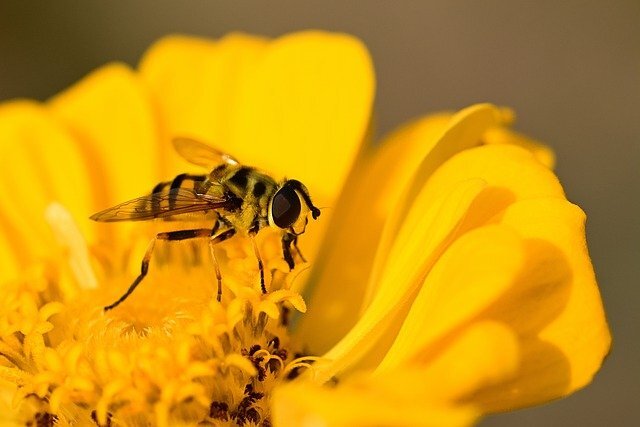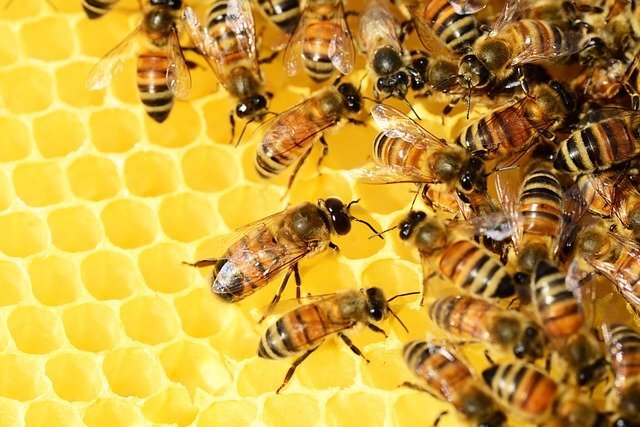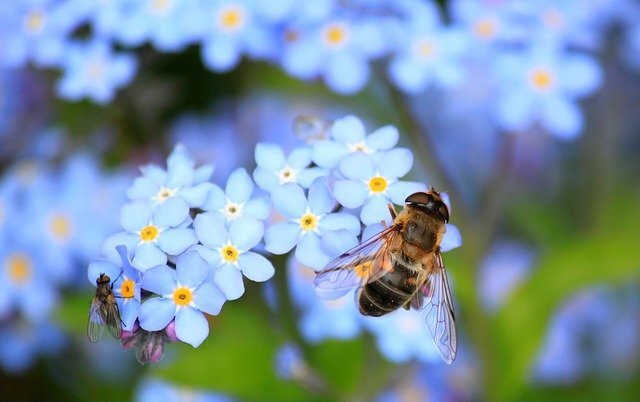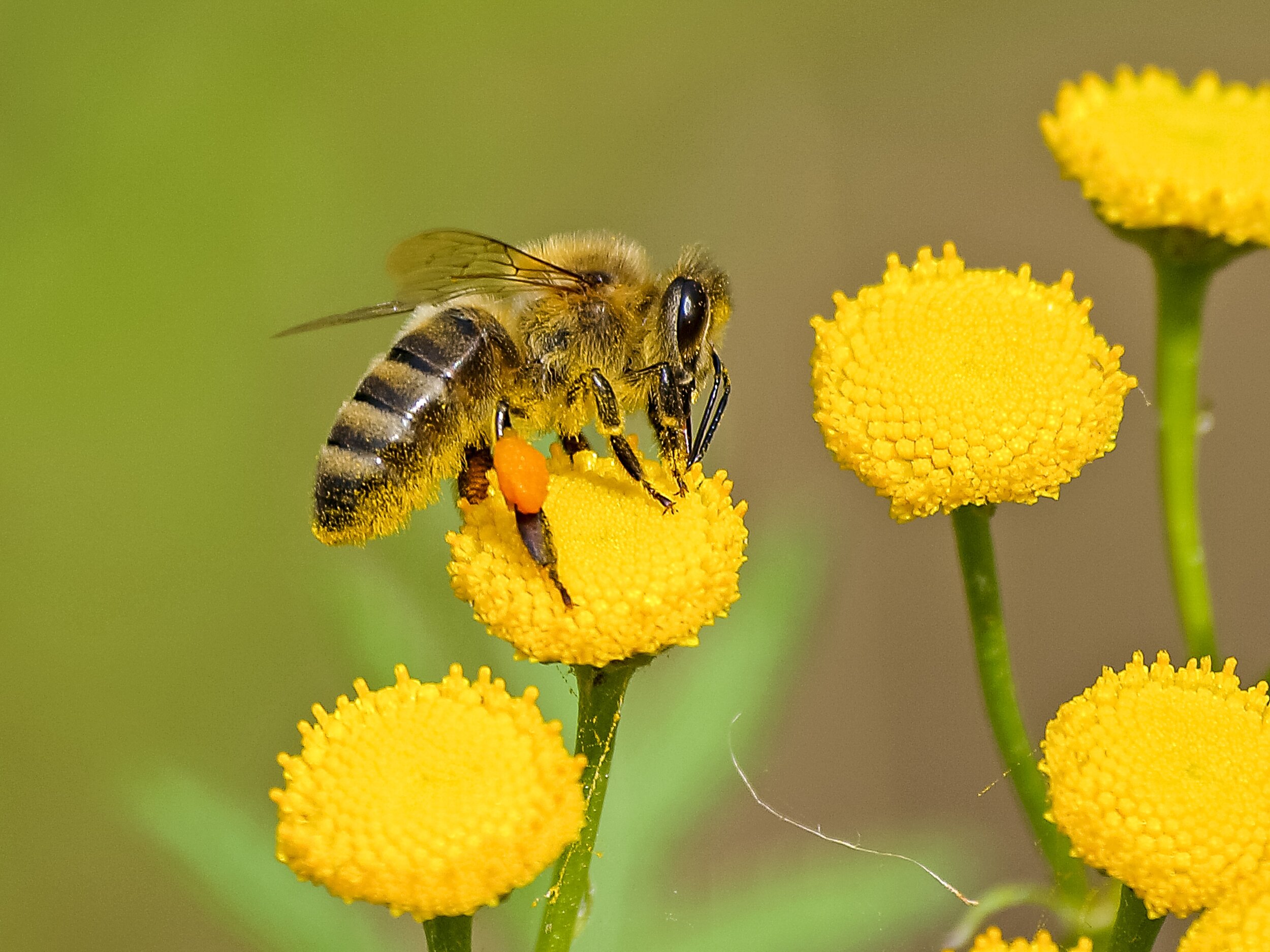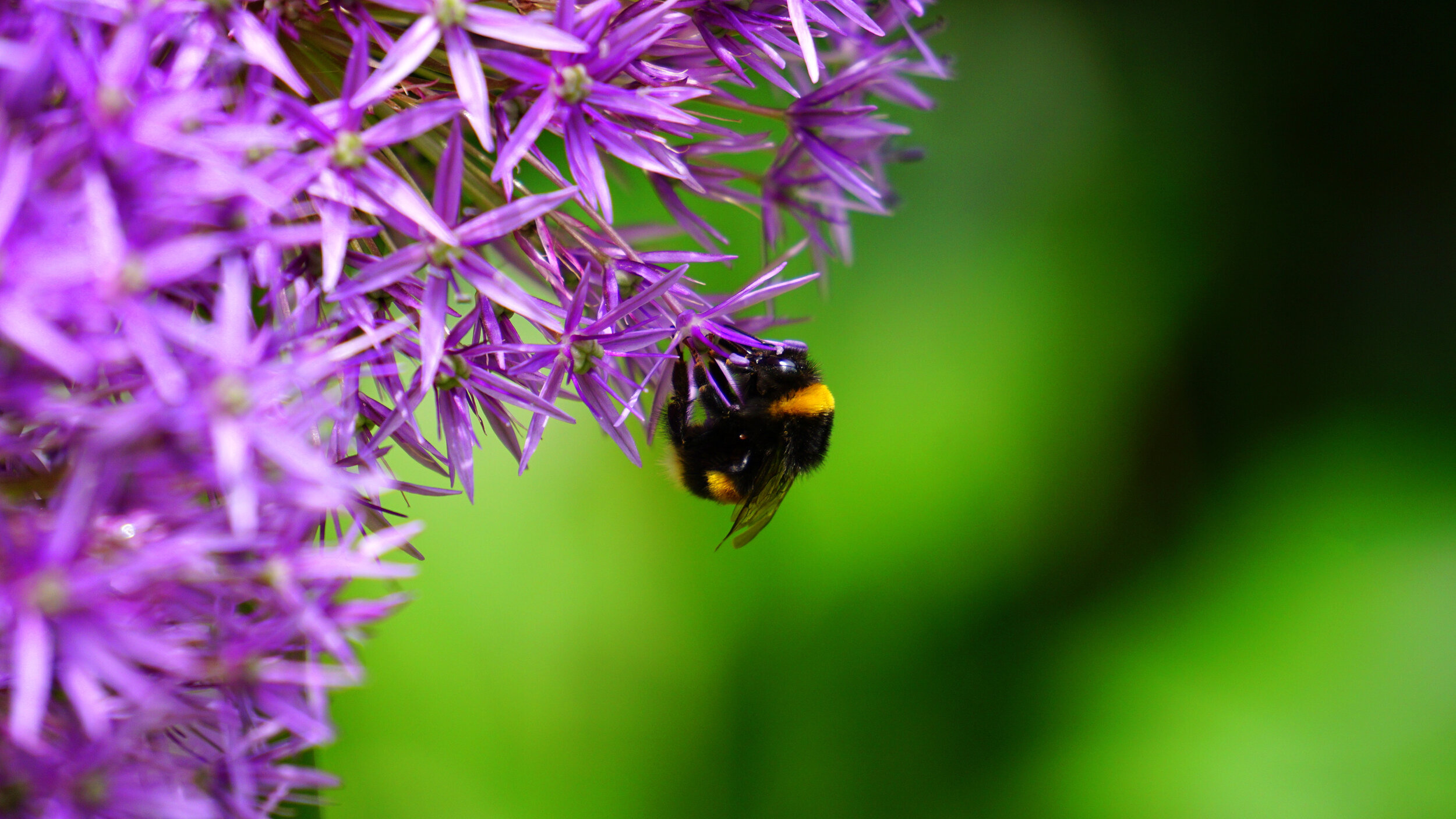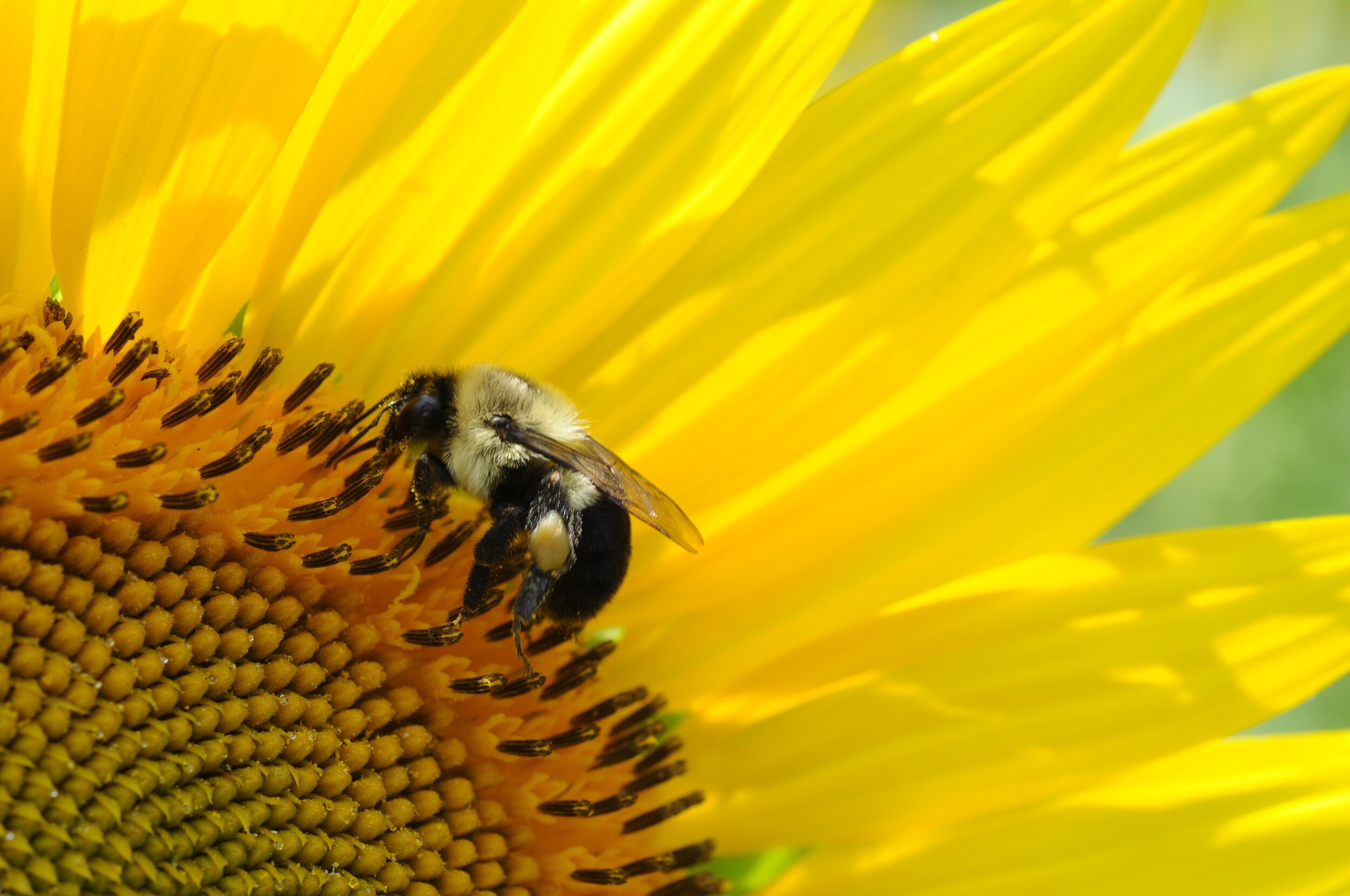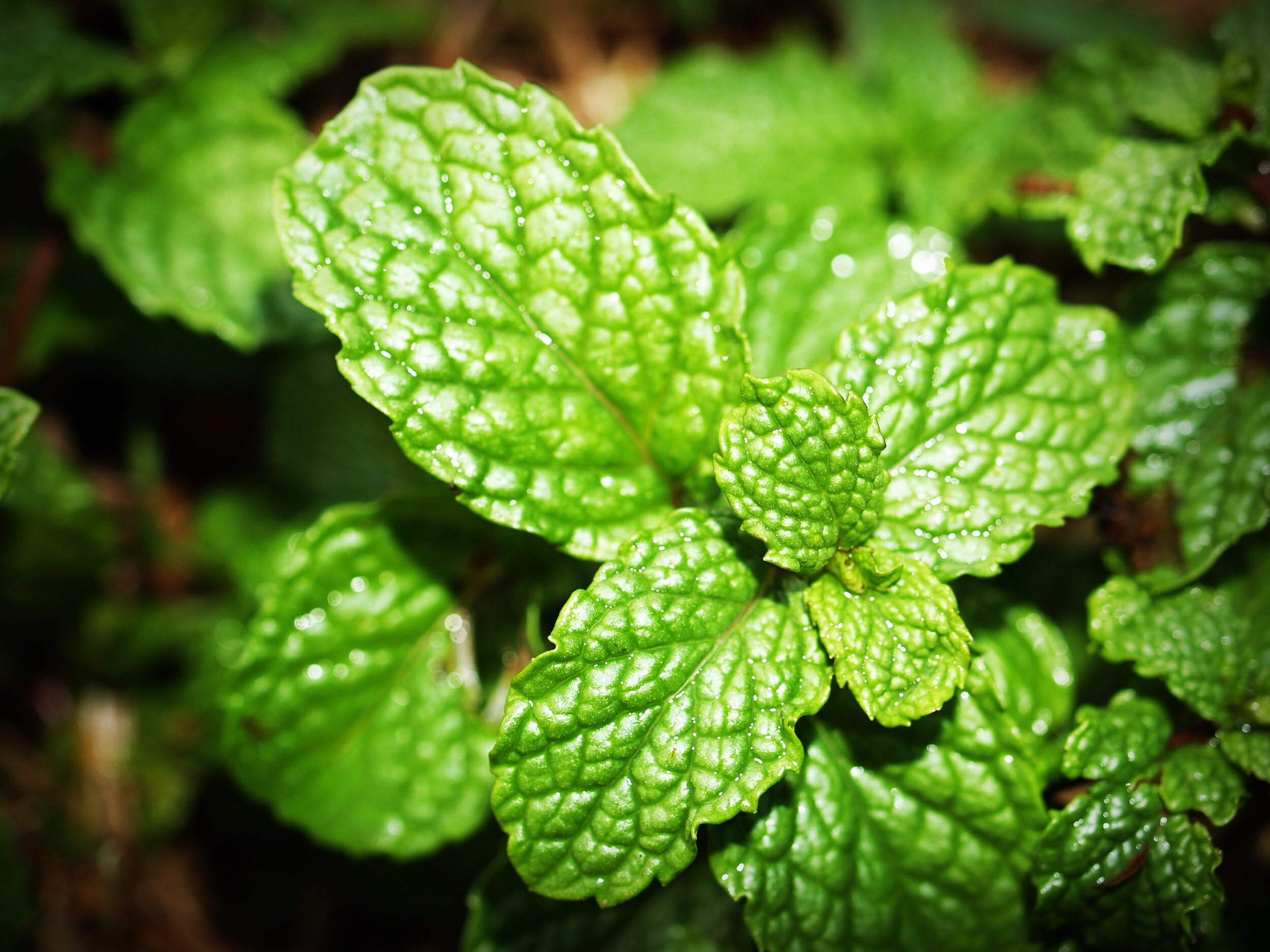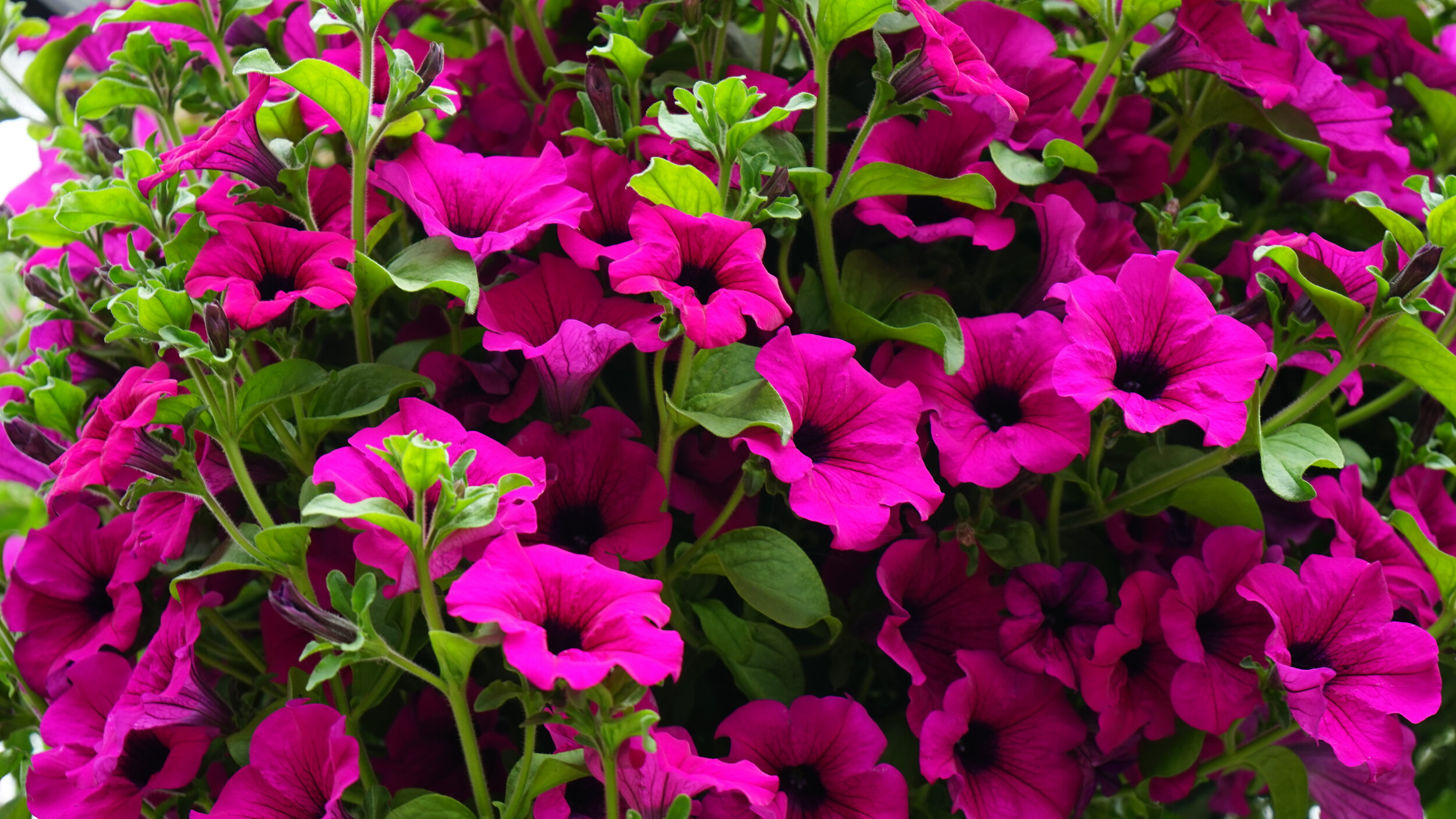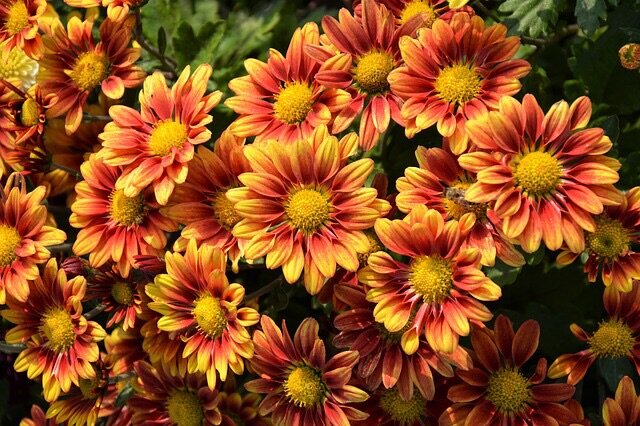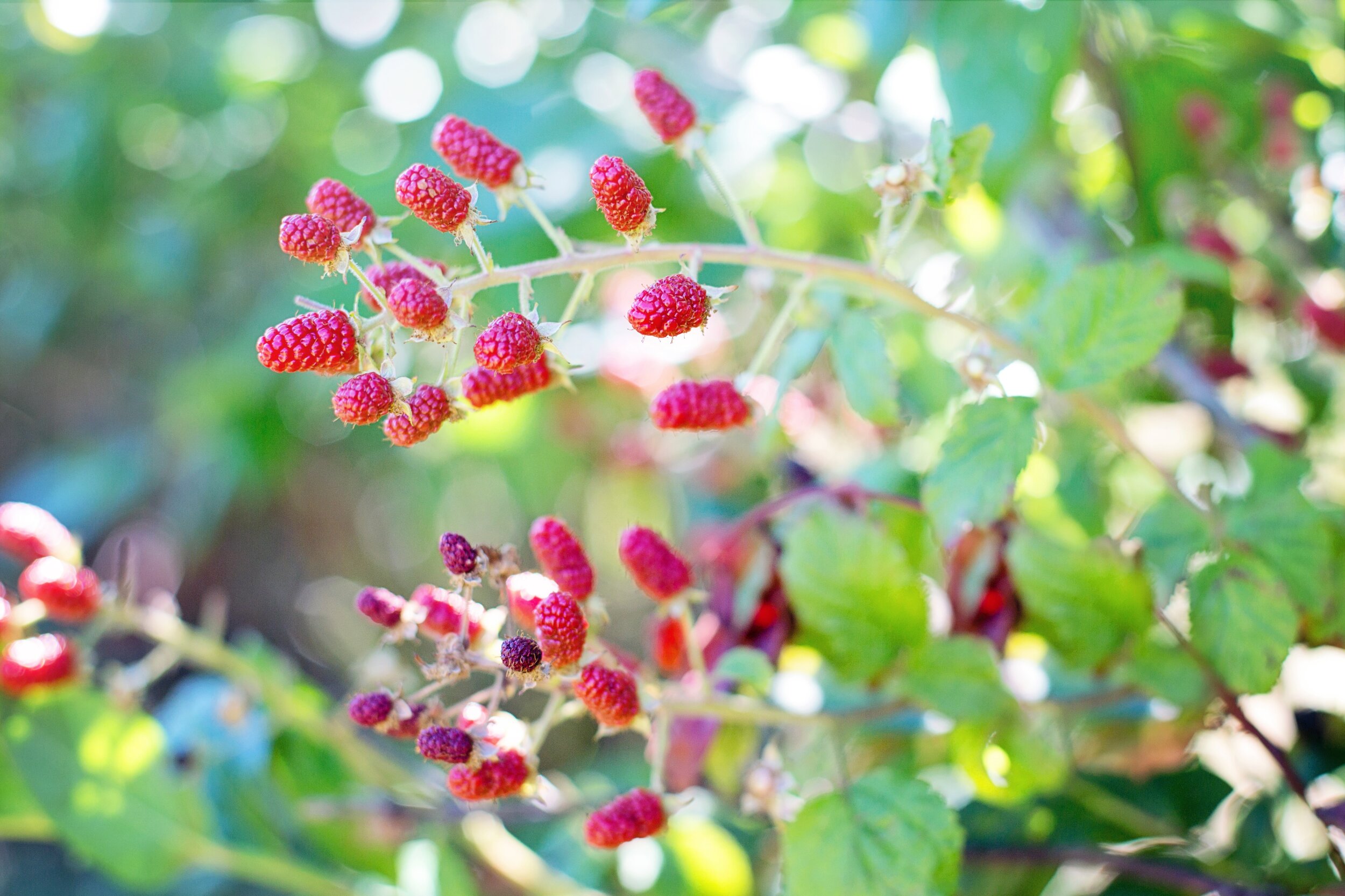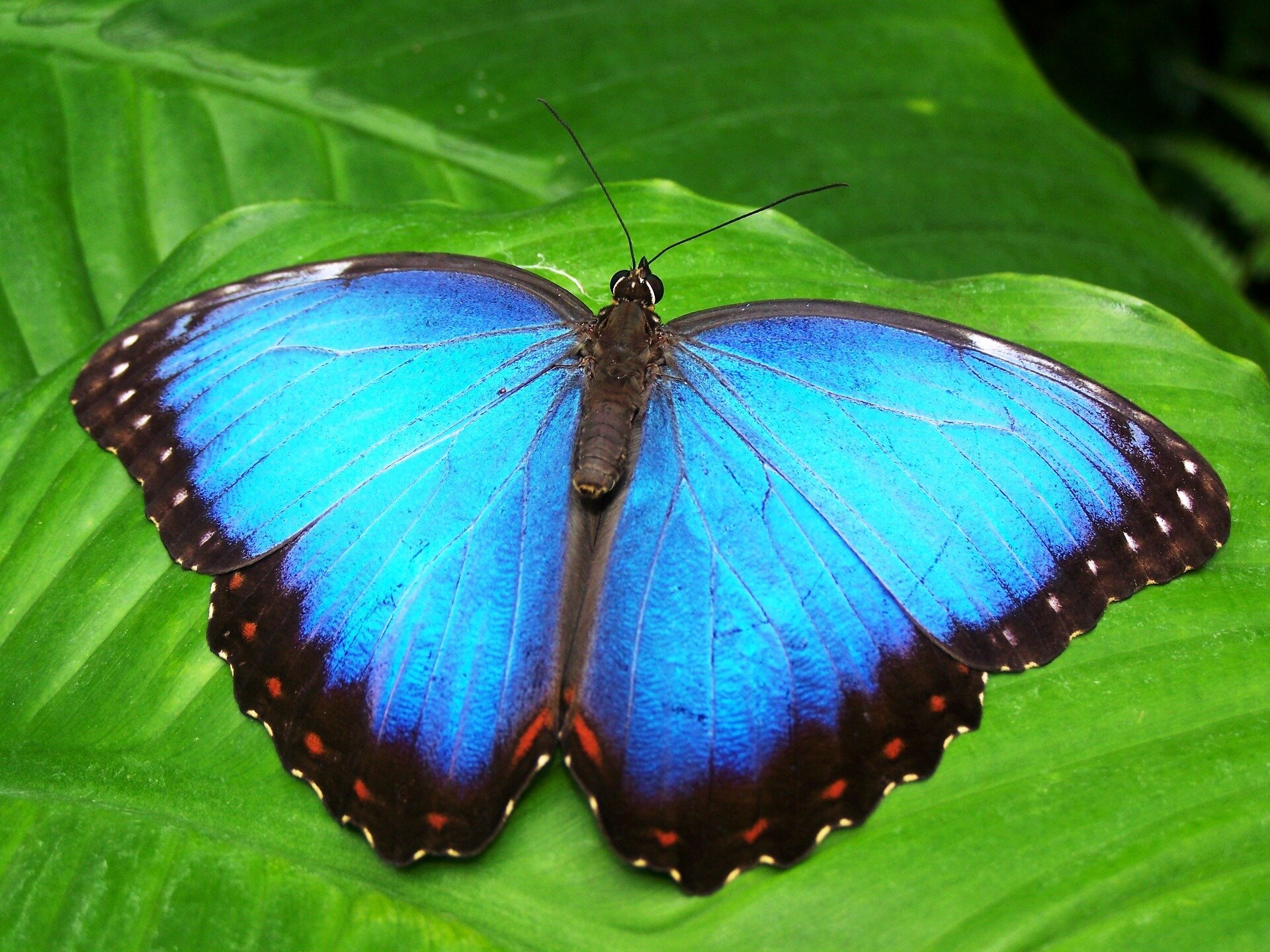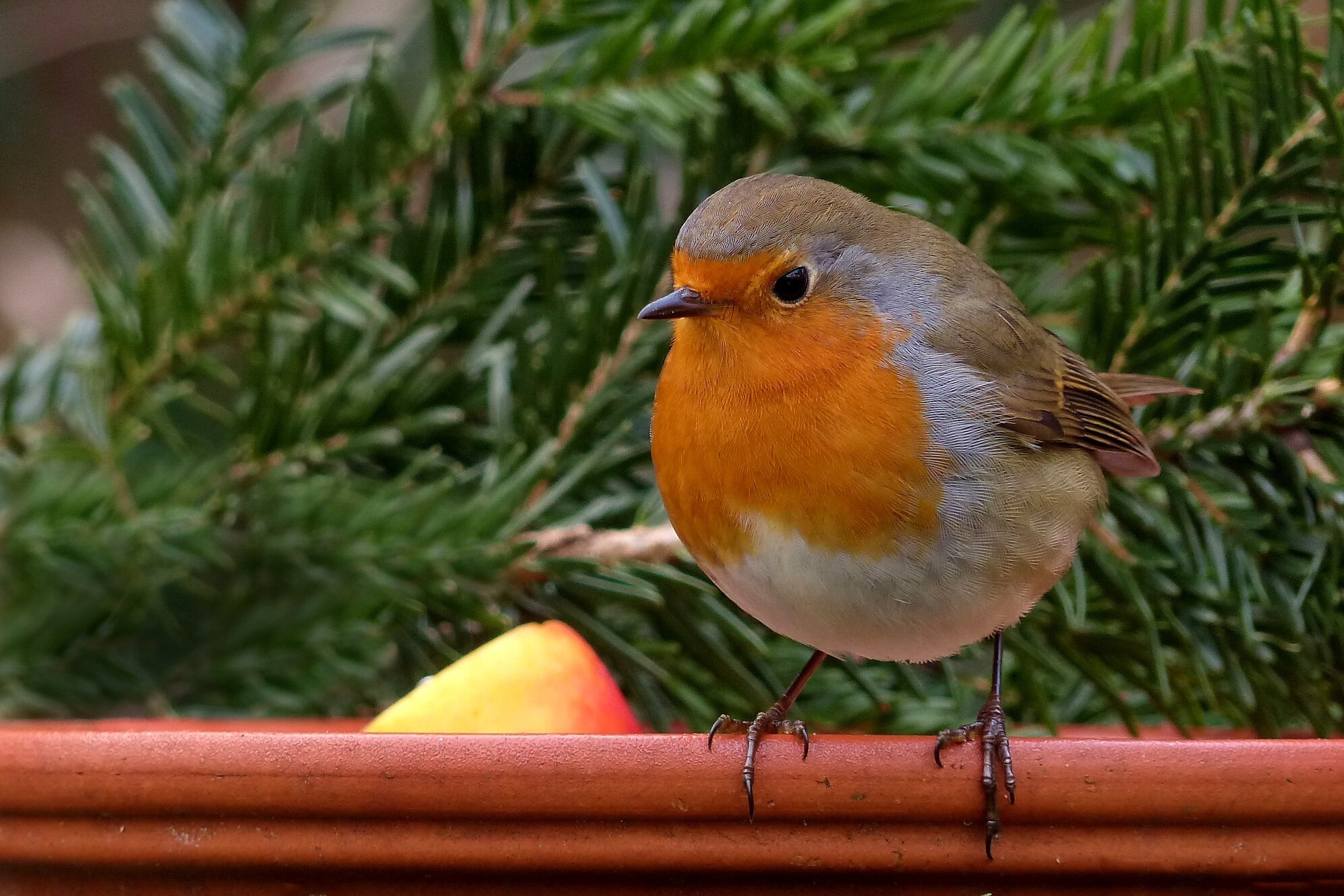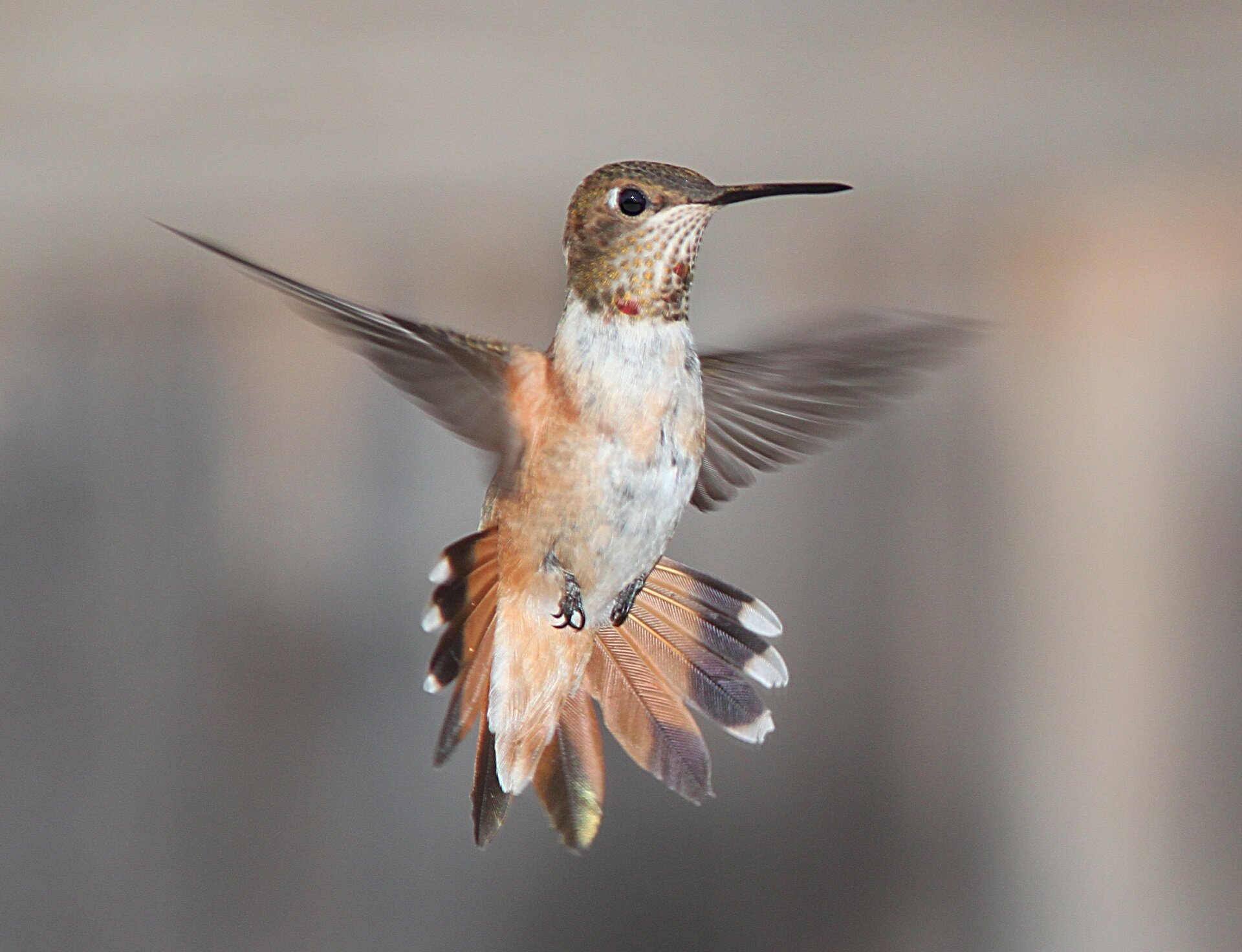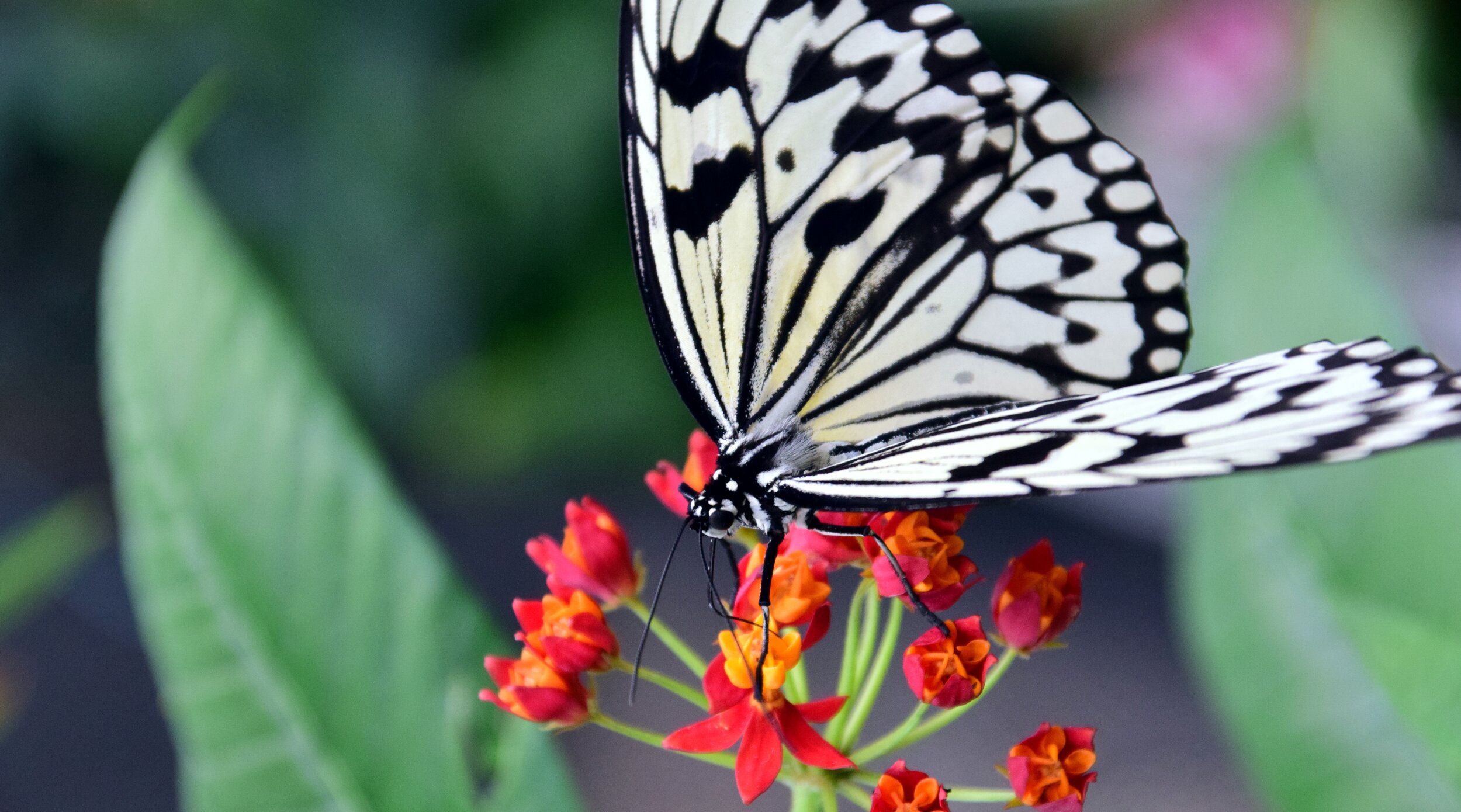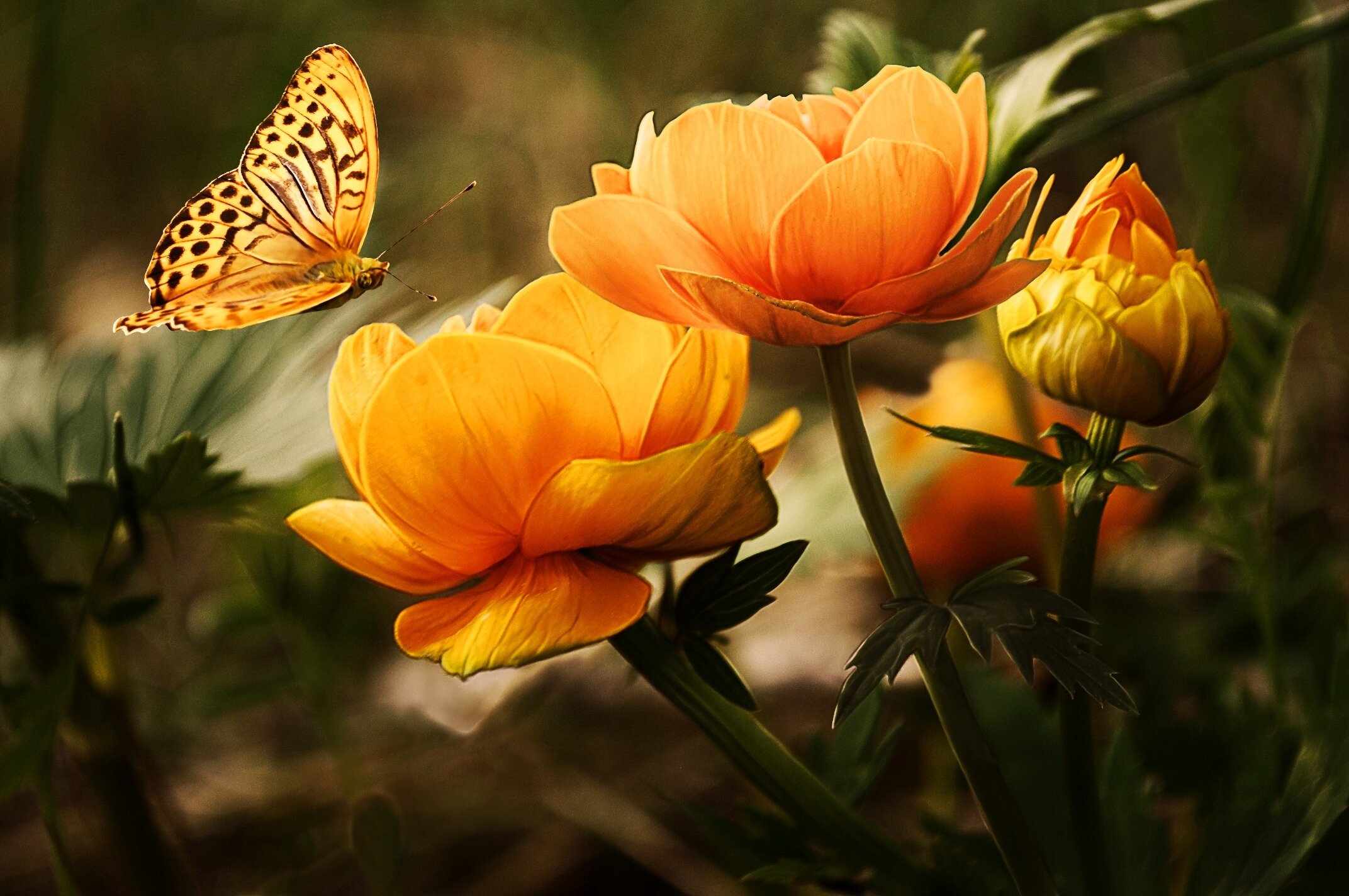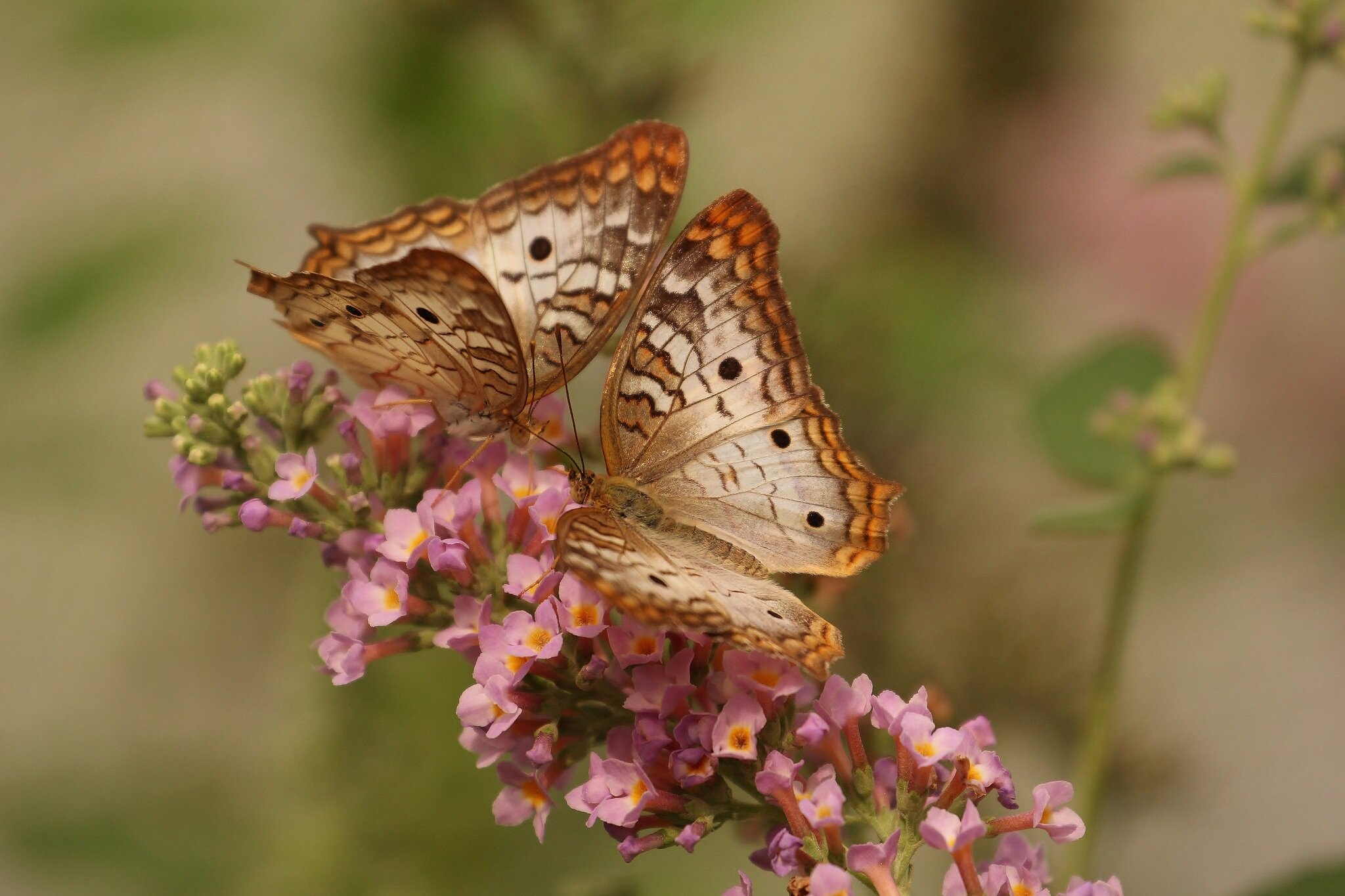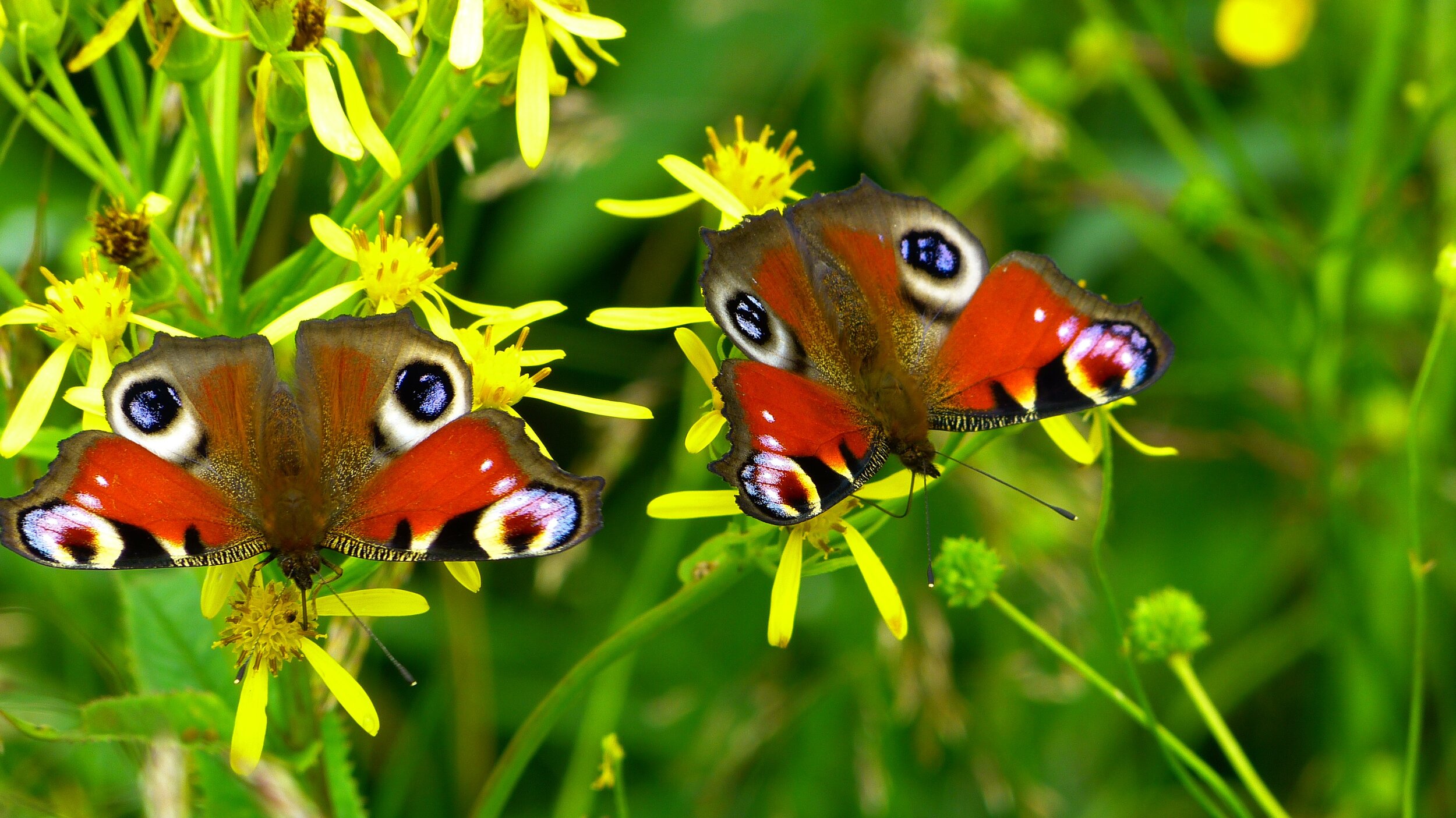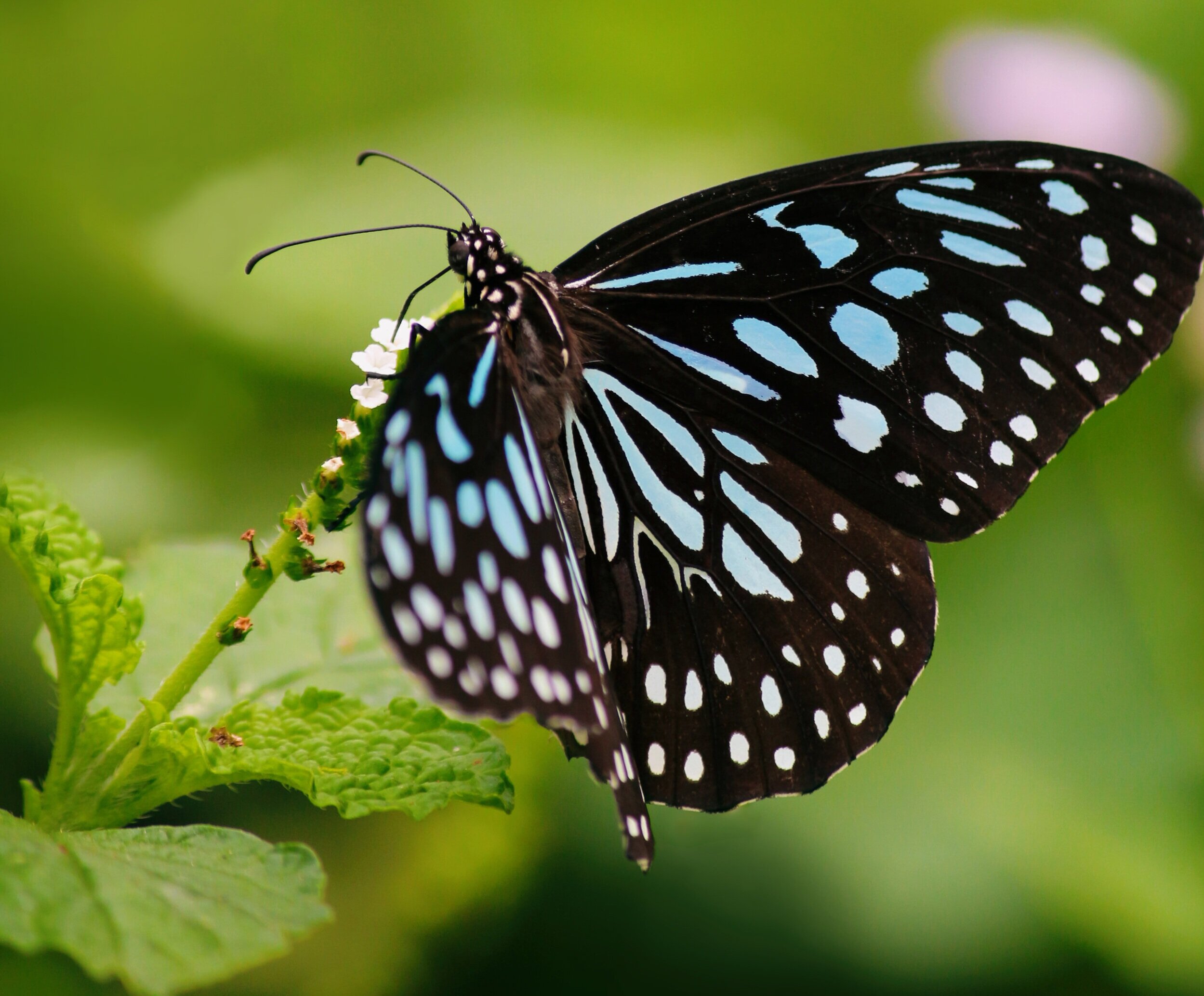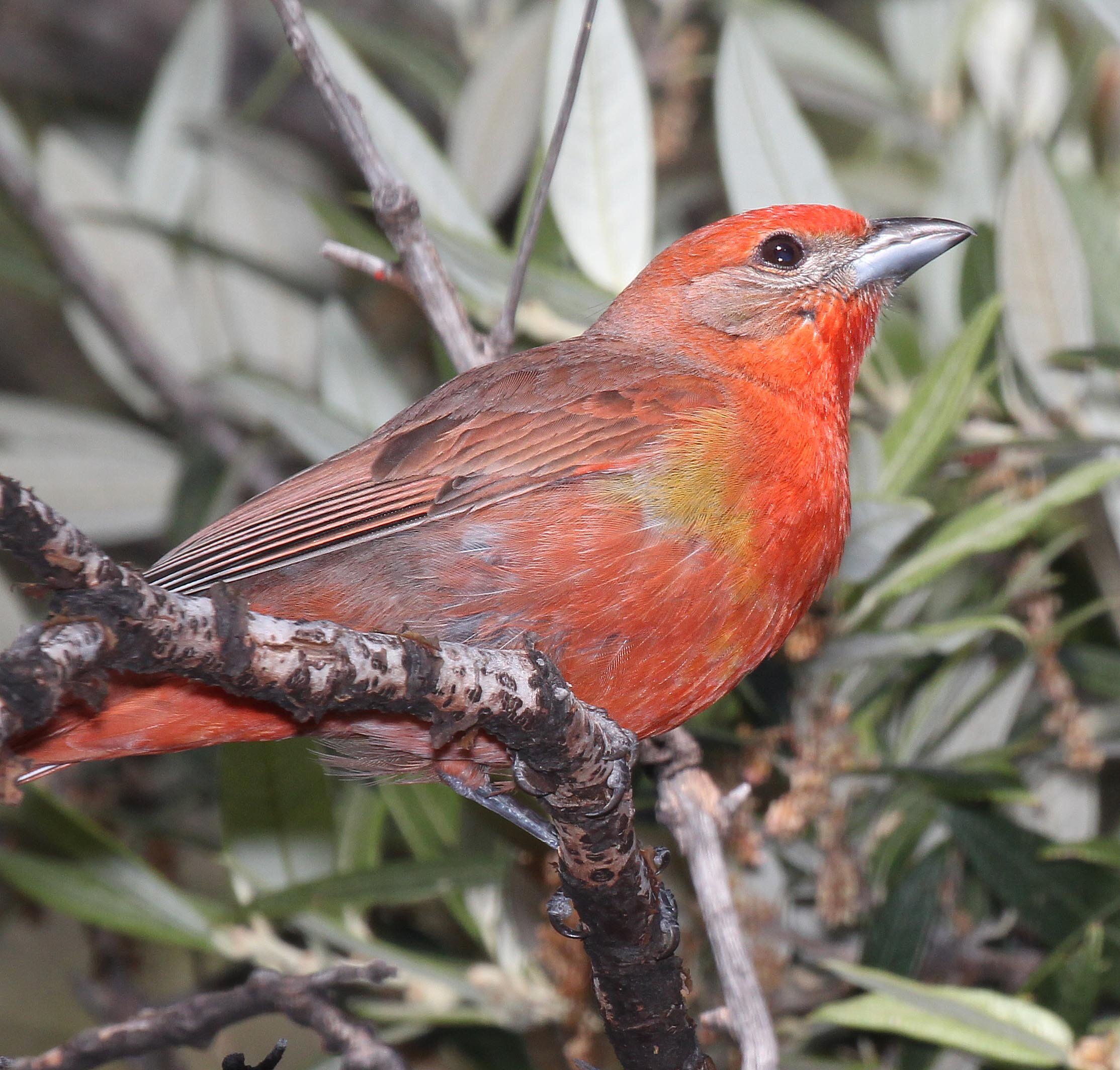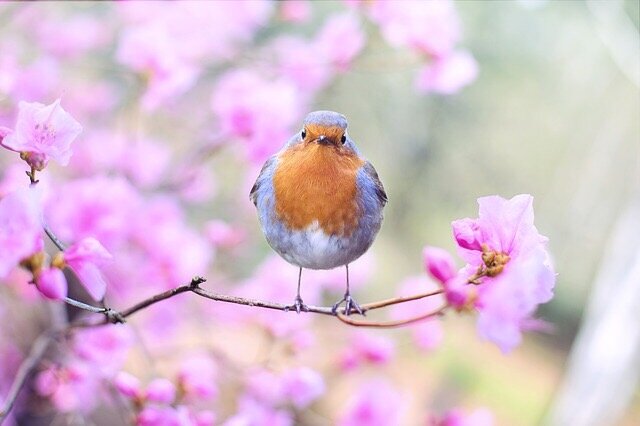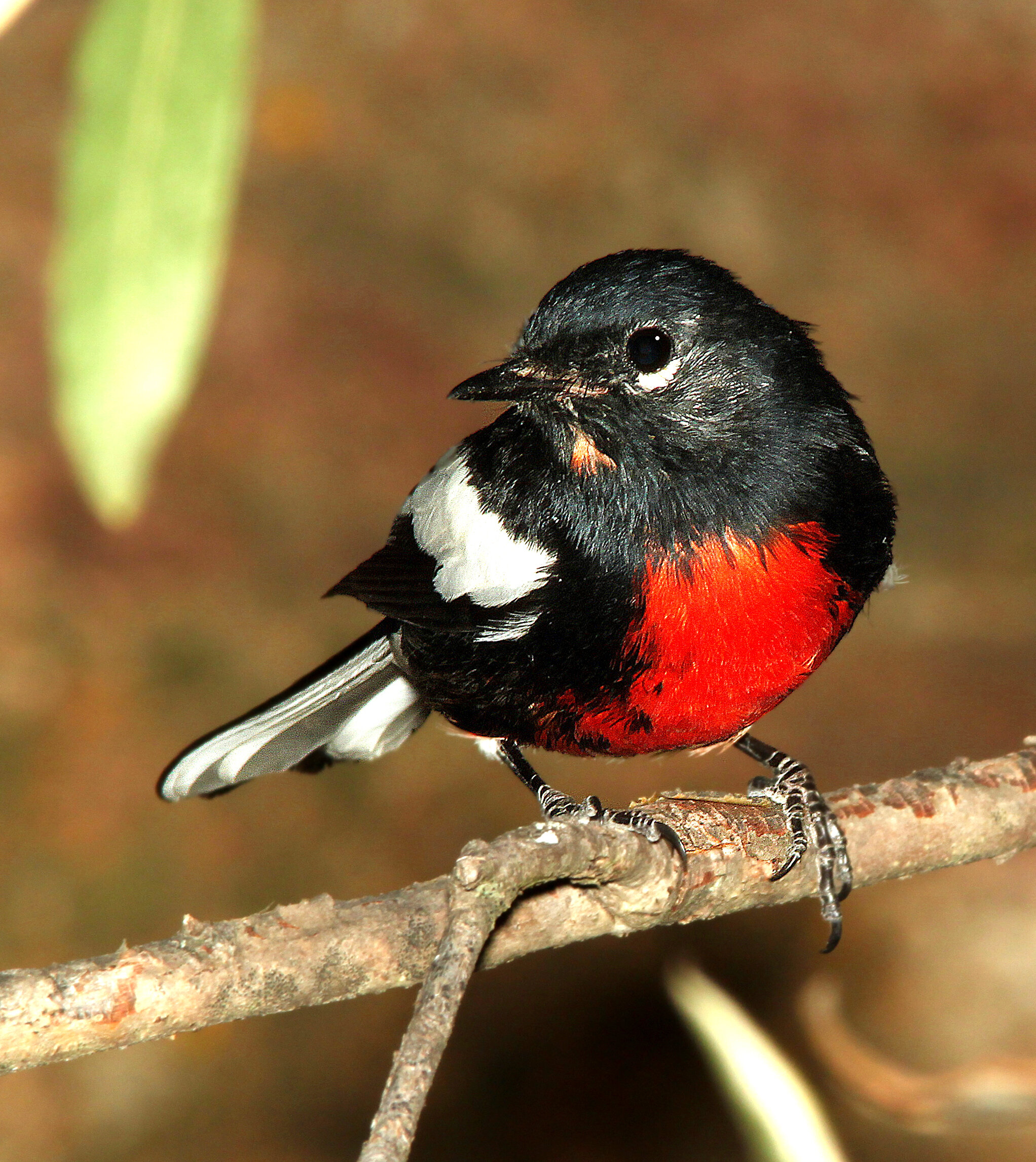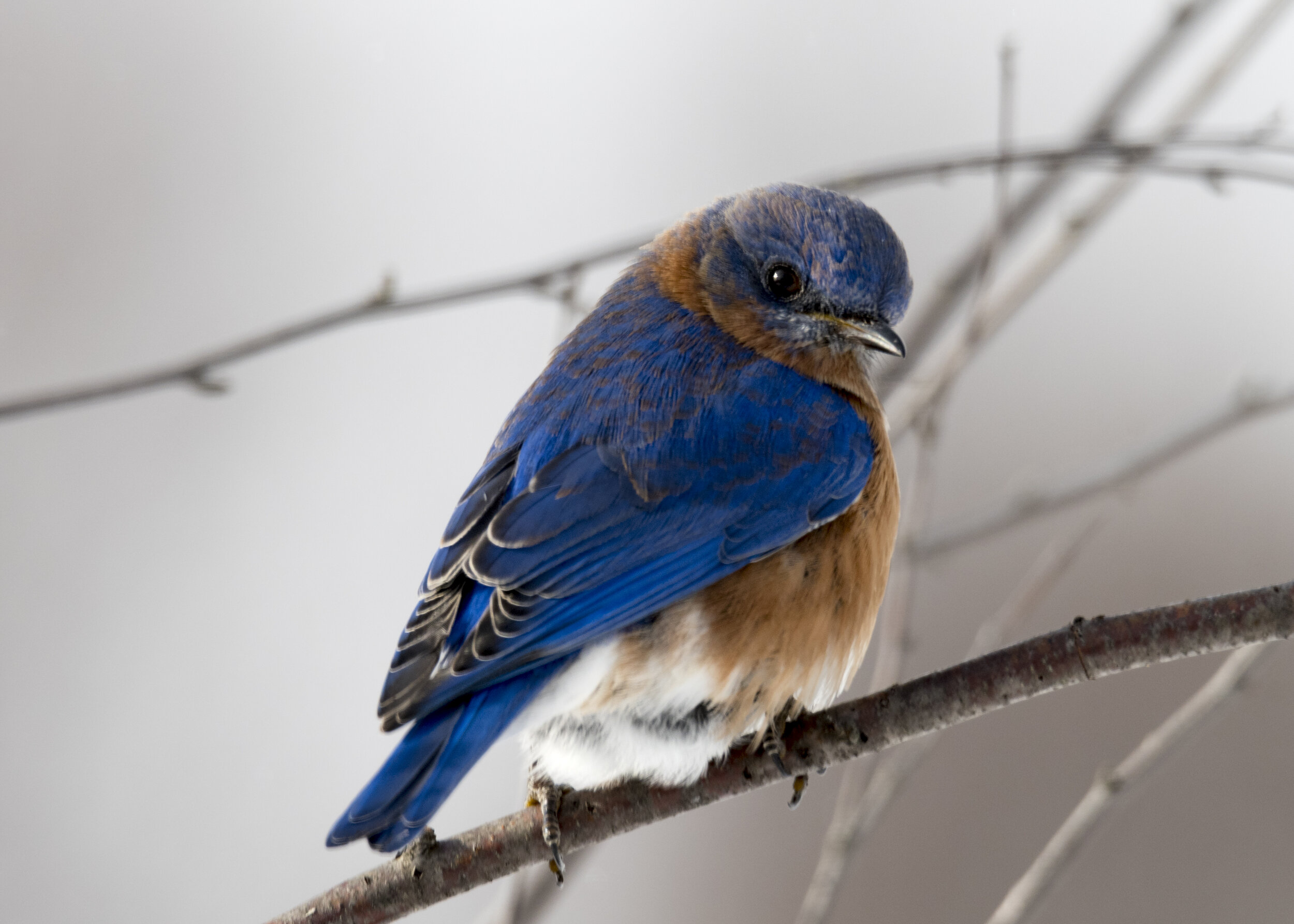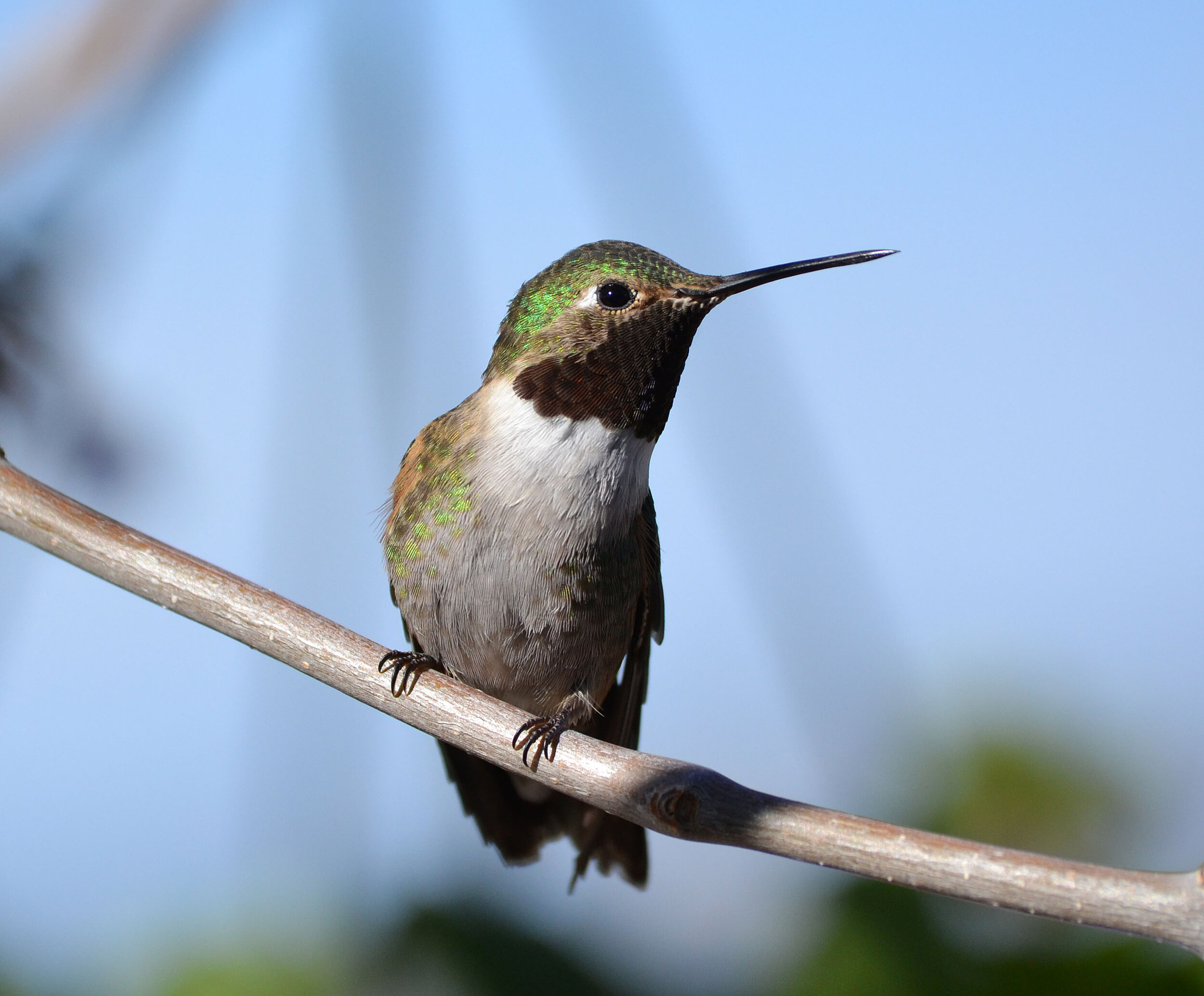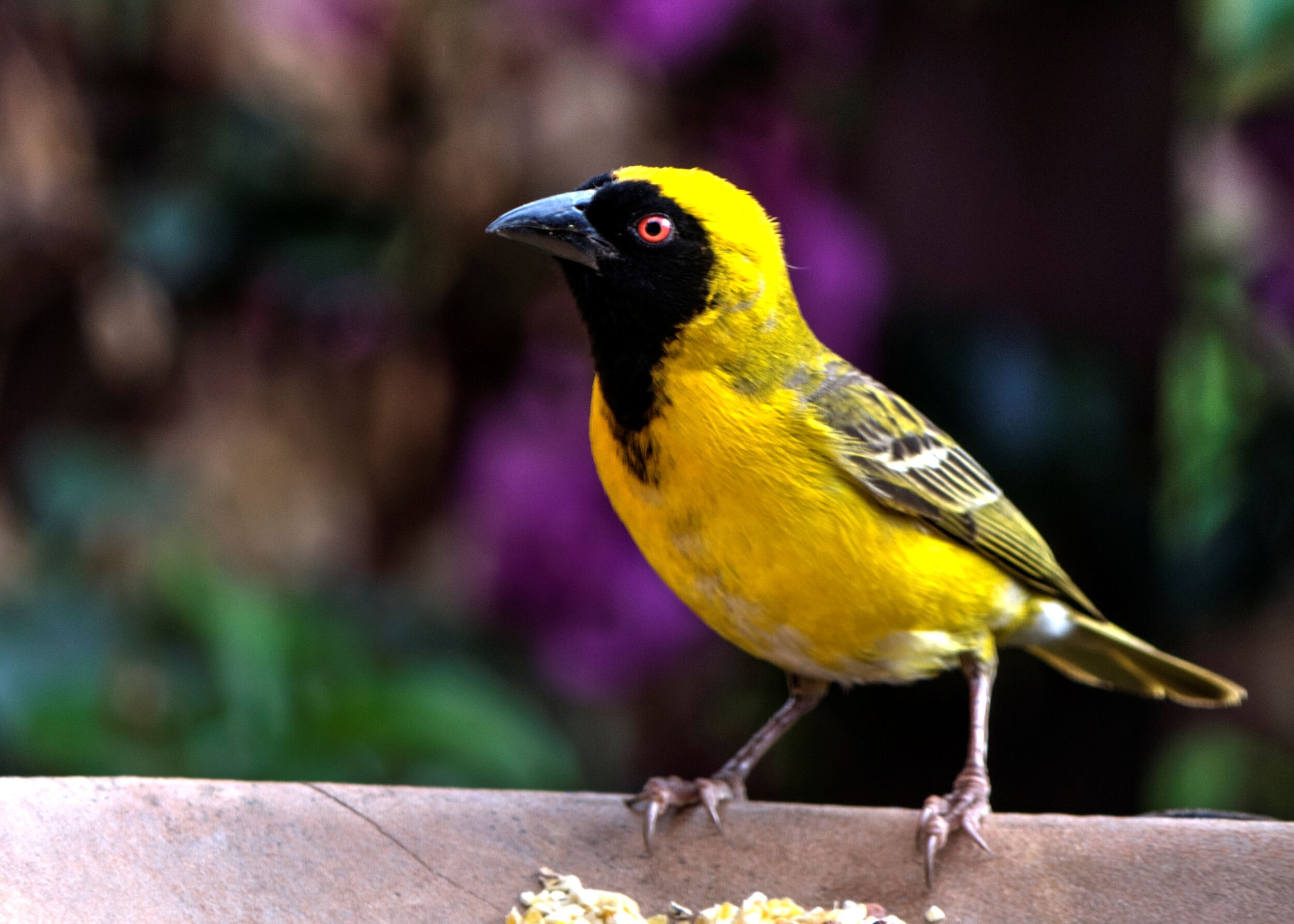Spring is the most important time of the year for honeybees. Honeybees survive the cold winter months by living off their storage of honey from the previous year, so they need to replenish their supply of honey.
The bee colony must also focus on increasing its population before summer. Spring is the queen’s mating and egg production season. Eggs are laid in the individual cells of the hive to form larvae and three weeks later the colony begins to grow quickly.
As the colony’s population expands, more worker bees are available for honey production.
As soon as the first source of pollen emerges, the worker bees get busy finding food for their colony. A single worker bee will visit 50 to 100 flowers before it must return to the hive to dispose of its supply. It can visit around 2,000 flowers per day.
In addition to nectar gathering and pollination, bees collect water to help regulate the temperature of the hive and liquefy thick or granulated honey from the winter.
To be “bee-friendly,” it’s important to be careful when cleaning up your yard or cleaning out of your garden to get it ready for planting. Dandelions are an important nectar provider. Often dandelions are the honeybee’s first source of food after the long winter. Instead of weeding them immediately, keep them for honeybees until more valuable sources bloom. Plant flowers native to your region. Honeybees especially love daffodils, sunflowers, and honeysuckles. Many native wild and crop plants have sets of bees that are so specialized they only visit these plants. The most important facet of bee conservation is the retention and accretion of all our flowering native plants. Many of these plants are important food crops while others are important for healthy forests, wildlife, and watersheds. Native bees are crucial to the survival of North America’s native plants, other wildlife, and people. About 30% of what we eat and a major proportion of nutrients in the human diet depend on bee pollination, including most fruits and vegetables, nuts, herbs, spices, oil crops, and coffee. Many trees which provide oxygen and absorb carbon from the atmosphere, fodder crops, plant-derived medicines such as aspirin and morphine, and cotton fibers are all bee-pollinated.
There are over 20,000 bee species worldwide, including the honeybee. The honeybee is not native to North America. The species was brought here by European settlers in the 17th century. Wild bee species live on every continent except Antarctica. In North America, approximately 4,000 native bee species occupy ecosystems from forests to deserts to grasslands. Native bees pollinate about 80% of flowering plants around the world including about 75 percent of the fruits, nuts, and vegetables grown in the United States. Honeybees are especially useful for pollinating almond trees and lemon trees. About 10% of native North American bees still haven’t been named, but they play important roles in pollinating plants in North America. Bee species that are native to North America range from sizes comparable to a grain of rice to a kumquat-sized species of carpenter ants.
Did you know all bees are not black and yellow? Bees come in a variety of colors, including green, blue, red, or black. While many species of bees are striped, some have a metallic sheen.
Bees pollinate plants as they forage for food. This is a crucial link in the food change for all life forms.
While the bee feeds on nectar and gathers pollen, some of the pollen sticks to the body. It deposits some of that pollen on the next flower it visits and fertilizes the plant. The fruits and seeds produced feed many other wildlife species.
Domesticated honeybee and wild bumble bee species live in hives, but most bees are solitary nesters. They don’t form hives, create honey, or live a communal lifestyle. They lay their eggs in a series of tiny chambers in tunnels in the ground, in hollow plant stems, or in decaying wood. Unlike their hive-dwelling relatives, female solitary bees leave a ball of nectar and pollen for their off-spring and leave them to grow and pupate on their own.
Some species don’t build nests, but instead, lay their eggs in nests built by other species. They sometimes kill the host species’ larvae to ensure their own eggs will have enough food to grow to adulthood.
Both domesticated honeybees and many native bee species are in decline. Many of the 250 bumblebee species worldwide are in drastic decline. Nearly one in four European bumblebee species face extinction. In North America, more than a quarter are in decline. Several species, such as the rusty patched bumblebee, are now listed as endangered in the U.S.
Declining bee populations have been linked to climate change, habitat destruction and changes in land use, use of pesticides, disease, agricultural and lawn and garden practices, habitat fragmentation, invasive species, and climate change.
Queen bumblebees can live for a year and workers for a month. Solitary bees also live for about a year but spend most of their lives developing in their nesting chamber where they hatch, pupate, and often overwinter. Their adult lives, during which they are active, last approximately three to eight weeks. During their short life cycle, it’s important that they have access to bee-friendly flowers, so they can do their job pollinating the flowering plants that will supply our food.
Now more than ever it’s important to plant bee-friendly plants and create areas in your yard safe for bees away from your outdoor space.
Plants for Bee-friendly gardens:
(From beefriendly.ca)
Lavender Cranesbill
Rhododendrons Aster
White clover English Daisy
Cotton Easter Rosemary
Heather Mint
Purple Toadflax Oregano
California Lilac Borage
Bachelor’s Buttons Thyme
Lily of the Valley Bellflower
Shrubby Veronica Calendula
Yellow mustard Escallonia
Forget me not Sage (Salvia)
Blackberry/Raspberry
Flowering plants are as versatile as they are beautiful. They add beauty to any landscape and can help attract or repel certain insects or animals.
Certain flowering plants can also help rebuild the bee population which is essential for pollinating our fields, orchards, and gardens. It’s estimated that one-third of the food we consume relies on pollination by bees and to a lesser extent other insects, birds, and bats.
There are over 20 butterflies and moths listed as endangered by the U.S. Fish and Wildlife Service which could become extinct because of loss of their habitat. Planting butterfly host plants and nectar plants can help support the butterfly population and bring these lovely creatures into your yard.
Twelve species of hummingbirds summer in North America. In fact, hummingbirds only live in the Western Hemisphere. They can be found from southeastern Alaska to southern Chile. Most species live in the tropics. Hummingbirds primarily eat flower nectar, tree sap, insects, and pollen. Some species of hummingbirds are listed by the International Union for Conservation of Nature and Natural Resources as vulnerable or threatened because of habitat destruction and loss. Adding certain plants to your yard can attract hummingbirds while helping them to thrive.
Songbirds, like the general bird population, are vulnerable to several threats, but the largest threat to all birds is habitat loss which migratory birds face in two locations. Planting certain plants can help bring songbirds to your yard.
Imagine sitting on your deck mosquito-free while bees, butterflies, hummingbirds, and songbirds flit from one colorful flower to the next. Most of us don’t have the time and space to create a perfect haven, but with some careful planning, we can create some colorful areas for these birds and insects to enjoy. Many of these plants are favorites with multiple birds and insects.
Did you know certain plants can help keep mosquitoes away?
Here is a list of the best mosquito-repelling plants to keep on your deck or porch to help you enjoy bite-free evenings of outdoor fun. Touch plants often emit their scent which repels mosquitoes.
Mosquito repelling plants:
Lemon Balm
Rosemary
Marigold
Catmint
Citronella scented geranium
Lemongrass
Lavender
Basil
Lemon Thyme
A butterfly garden can be any size – from a window box, flower bed, or the back of your yard to your whole yard - you decide. Keep in mind wasps, ants, parasitic flies, birds, snakes, toads, rats, lizards, and dragonflies eat butterflies. Frogs and spiders eat butterfly eggs, caterpillars, and adult butterflies. In some parts of Mexico, Africa, and Southeast Asia butterflies are served to humans as appetizers or desserts. Some information is taken from www.learnaboutnature.com.
The female butterfly lays her eggs on plants her caterpillars can use as food because tiny caterpillars can’t travel far to reach their own food. Be prepared – these plants will be chewed on, so most gardeners plant them toward the back of the space, but still near the nectar plants, so the chewed-up leaves are less noticeable. Different varieties of butterflies prefer certain plants. If you are trying to attract a certain variety or a mix of butterflies, the additional information on the butterfly.com site will be important for you,
Plants to attract Butterflies:
(the butterfly site.com)
Host plants: Nectar plants:
Clover Butterfly bush Lantana
Deer weed Verbena Common dandelions
Sweet fennel Garlic Daylilies
Dill Chives Sedum
Parsley Milkweed Black-eyed Susan
Carrot Daisy Radishes
Snapdragons Heliotrope Catnip
Cabbage Marigold Ground Ivy
Mustard plants Liatris Shasta Daisy
Hollyhocks Aster Goldenrod
Roses Oregano
Sunflowers Oriental lilies
Milkweed Petunia
Thistle Phlox
California Lilac Purple Coneflower
Nettles Wild Bergamot
Wild licorice Zinnia
Pansies Delphinium
Hummingbirds have no sense of smell. They must rely on bright colors to attract them, so use red feeders and plain, clear sugar water w/o red dye – 1-part white sugar mixed with 4 parts water.
For songbirds, include a birdbath and try to use native plants for your region to attract more songbirds to your yard.
Plants to attract hummingbirds:
Hummingbirds: Songbirds:
Bee balms Sunflowers
Columbines Coneflower
Daylilies Cornflower
Lupines Black-eyed Susan
Foxgloves Daisy
Hollyhocks Aster
Impatiens Marigold
Petunias Virginia Creeper
Cardinal flower Elderberry
Zinnia Staghorn Sumac
Salvia
Bleeding Hearts
Butterfly Bush
Trumpet Creeper
Pittsburgh is considered zone 6b (growpittsburgh.org)
According to almanac.com, frost dates for Pittsburgh are spring April 23 and fall October 19.
The growing season for Pittsburgh is approximately 178 days.







